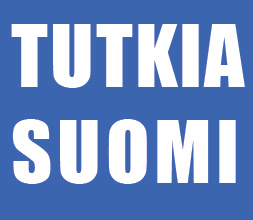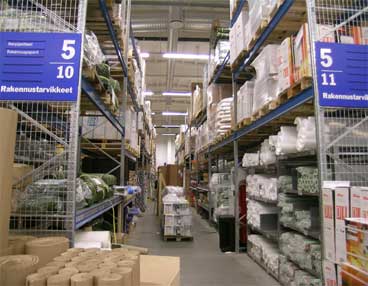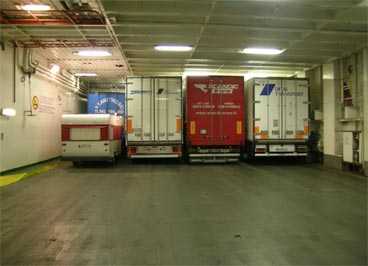

20.11.05-5.12.05
"A discovery of a place is something that can be done again and again!"
The question of what to look for always comes up while one is on the road. A discovery cannot be predetermined. It is a voyage into the unknown. For three weeks in the month of November 2005 the two artist groups aiPotu and Parfyme went on an expedition to
Modern expeditions
An expedition is in the historical use of the word often related to military endeavours. For the most part expeditions were the fore troop of the army, the scouts searching for new places to conquer. With the industrial revolution in the 19 and 20th century, undiscovered places on earth were almost exhausted. By 1953 explorers had already reached the most desolated places of our planet. Military conquest led the way for scientific explorations that could find new ways “to save” the planet and increase economic welfare of its inhabitants.
Today, exploration has become a personal issue. Globalized markets have made people into world consumers, buying services and goods that rarely are produced where they themselves live. One does no longer have to travel great distances to find necessities from the other side of the globe. To explore is today no longer a global issue, but a local one. The challenge is not so much to travel, but the way one perceives and acts in the place one visits. It is not merely a matter of resources; it is the mind that has to be open and ready to see things in new ways - a way to discover the same place again and again.
Preparation
We all had to prepare for the trip – both mentally and physically.
The plan was to use one of the cars as living quarters and the other one to transport equipment and material needed for our constructions. Some minor alterations had to be done to adapt the cars for Finish conditions.
The carpet was removed in the mobile home to improve the hygienic conditions. To save battery we bought four red oil lamps that were hung in fire safe places in the interior cabin. A military wood stove was installed using one of the air outlets as a hole for the pipe. The outside temperature varied between +150C to – 100C. On full blast the oven got red hot and produced around 3000W, creating sauna like conditions in the car. In addition to the stove we had extra wool covers on the beds for cold nights. There is no toilet in the car, but a set of plastic bottles were used when public toilets were not in the vicinity. The car had snow tires in the front, if it started to snow really heavy, we were prepared to make a stop by Nokia to by new ones.
Before leaving
8 lightposts, 1000W Generator, water pump, 10 m hose, 7 plastic covers,1 empty oil barrell, 5 liters of camping gas, 2 liters of engine oil, 10l of gasoline, 24 spray cans; colours red, blue, yellow, green, silver, gold, black, brown, white, 3 l bucket of red acrylic paint, 3l bucket of yellow acrylic paint, sodastream soda machine, 4 normal hand saws,1 axe, stick saw, 3 hammers, 4 drills, 2 bit sets, 3 packets of screws,1 trumpet, 2 traditional light bulb chains,1 theater spot light,4 work lamps,1 military wood heater for camp use, 5 packets of snuff General and Ettan, 2 liters of Korskenkorva Viina, 4 packs of Sisu liqourice, 4 liter of red wine, 40 boxes of canned food, 8 small and 4 big wheels, 4 sets of workers clothes, 4 workers head gear; sheep wool lining, 4 workers head gear; cotton lining, 4 sets of wool underwear, 200 m of electric cable, 4 sets of hardy industrial shoes, 1 projector, 2 professional dv cameras, 2 digital photo cameras, one mobile home, one van, 2 laptop computers, 6 rolls of strong duck tape, 6 forks, 4 knives, 2 pairs of running shoes, 2 pairs indoor shoes, 4 pairs of work shoes, 10 pairs of underwear, 8 pair of trouser, 8 sweaters, 4 mobile phones, 120 sheets of blank paper, 3 oil lamps, 4 l of oil, 50 paper plates, 50 plastic spoons, 5 rolls of paper towels, 8 rolls of toilet paper, 4 outdoor jackets, 4 dress jackets, 4 sets of rain gear, 3 crates of beer.
Urban rooms for living
For three weeks four men shared living quarters in 4 m2 space. Each one had a one m2 of space that had to be respected, tolerated and exchanged. For three weeks, we were living more intimately than we have ever done before with anyone else.
In contrast to other expeditions where daily chores are delegated to one person for the whole trip. Cooking, cleaning, finding wood and making of the beds for the night time were chores equally divided between crew members on a daily basis. To save water, we had bought paper dishes and cups that could be thrown away after each meal. We prepared simple dishes with local ingredients like herring, baked beans, mustard, red beats, special finish rye bread and spreads. Some meals were accompanied by a small shot of Korskenkorva to kill oncoming throat infections. Getting up in the morning was though due to low temperatures. At night when one person did the beds while the others were out in the streets busy brushing their teeth. In order to keep motivation up, sleep was prioritized and lights were out around 12 on most nights.
Things we discovered along the way
When one cannot relate one is a foreigner. One is different. You talk and walk and dress in other ways than the people you meet. Being a foreigner means also accepting that one is different, that one does not understand everything and that one is an outsider. But that makes you able to do things you wouldn’t do at home, because you’re not aware of the rules and you’re not afraid to break them!
In
We found
Hullu, India, Manne and Elvis



